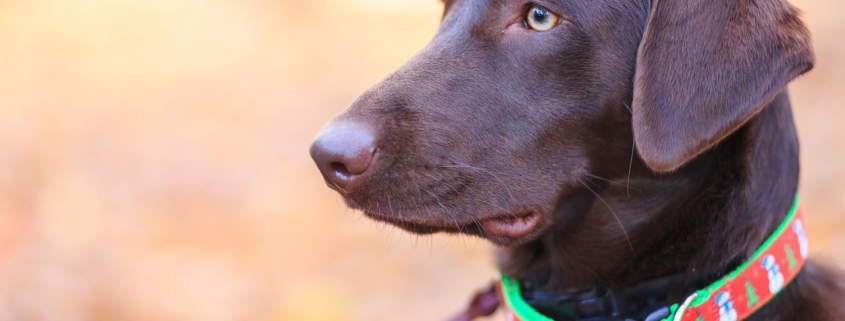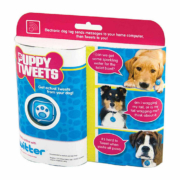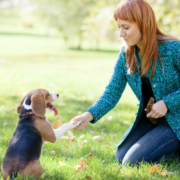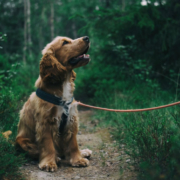What Type of Collar or Harness is Best For Your Dog?
Dog collars and harnesses come in a variety of styles to fit just about any type of dog and training need. Choosing a collar or harness for your dog can be difficult, but it doesn’t have to be impossible. Use our guide to find out what collar or harness is best suited for your dog, and remember: no matter what kind of collar or harness you use with your dog, always safely and securely attach your dog’s identification tags to the collar she is going to be wearing each day.
Common types of dog collars and harnesses
The most common types of dog collars and harnesses are nylon collars for smaller dogs, leather strap collars for larger dogs, metal training collars, and nylon harnesses for dogs with respiratory issues that prevent proper collar usage. Training collars are also available, providing a safe, secure option for reinforcing your dog’s training while on walks or exercising.
Your first step in choosing a dog collar or harness should be to consult with your veterinarian, as he or she will be able to make you aware of any problems your dog may have with certain types of straps, fabrics, and restraints.
Size matters
As with all purchases you make for your dog, consider your dog’s size when shopping for collars and harnesses. Smaller dogs will require collars and leads that are flexible and lightweight. On the other hand, larger dogs require collars and leads made of heavier, sturdy materials, such as leather.
Collars measurements can be obtained by wrapping a tape measure around your dog’s neck. Collars should fit snug against the neck, with space for two fingers to slide comfortably between the collar and the throat. Collars that are too tight or too loose present different types of choking and injury hazards, so be sure to find the proper fit for your dog before leaving the collar on.
Collar types
Traditional collars
Nylon – Lightweight, flexible nylon collars and leads are great for mature small to medium sized dogs that have already gone through training. Nylon collars come in a variety of styles and shapes. Newer rolled material models are a better option than flat nylon, as they tend to fit more comfortably on your dog’s neck and prevent chafing. Nylon dog collars usually feature a quick-release or break-away fastener made of plastic that allows for easy open and close. Break-away fasteners were designed to allow your small or medium sized dog to break free of her collar should the need arise, such as if she gets tangled or begins to choke, but normally the more typical break-away fasteners should be used with most types of small to medium sized dogs.
Leather – Heavy, durable leather collars are a good option for mature larger dogs. Traditional leather collars come in a variety of styles and shapes. or leather, as they tend to fit more comfortably on your dog’s neck and prevent chafing. Traditional leather collars usually feature an adjustable buckle fastener, which is stronger than the quick-release plastic fastener typically found on nylon collars. When purchasing a traditional dog collar, shop for the best fit and appropriate style for your dog’s size and temperament. Aggressive larger dogs will need heavier materials and an extra-durable lead to ensure you have complete control over your dog on walks and when exercising.
Harnesses
Adjustable dog harnesses are recommended by veterinarians for smaller, growing dogs, as well as dogs that suffer from breathing problems that may prevent the regular use of a normal neck collar. Dog harnesses feature straps that wrap around your dog’s legs and torso, establishing a safe and secure connection to the lead. Harnesses are usually made of nylon, but harnesses made of other materials, such as leather, also exist.
Training collars
Slip collar – Slip collars, also known as “chain-slip” and “choke collars,” are usually constructed of metal or leather. Slip collars are effective training tools and can serve as a walk collar for larger, more aggressive dogs. Slip collars have no buckle fastener – instead, slip collars work by creating a loop around the dog’s neck, establishing a deterrent to aggressive behavior when on walks or exercising. Slip collars do present an injury hazard and should be used in conjunction with regimented training and only under the supervision of the dog’s owner or a trained professional, such as a dog walker.
Prong collars – Prong collars look dangerous, but they’re actually very effective training tools. Prong collars employ a ring of metal prongs that place light pressure on your dog’s neck when it jumps or pulls on your grip while on walks or exercising. Prong collars usually use the same method of restraint as slip collars, in that the collar tightens as more pressure is applied by your dog against the restraint. Prong callers are generally safer than slip collars, as your dog will respond more immediately to the prong pressure and resist further stress once the prongs meet the skin.
Halter or Head collars – Halter or head collars are another great option for larger, aggressive dogs and juvenile dogs being trained to behave appropriately on walks and while exercising. Halter collars are similar to the type of brace used on horses, featuring a regular neck harness as well as an attachment that loops around the dog’s head, over the bridge of the nose. Dogs respond to head restraint and pressure more obediently than any other type of restraint, and doctor developed halter or head collars are a safe and secure option to treating aggressive behavior by your dog, regardless of size.







